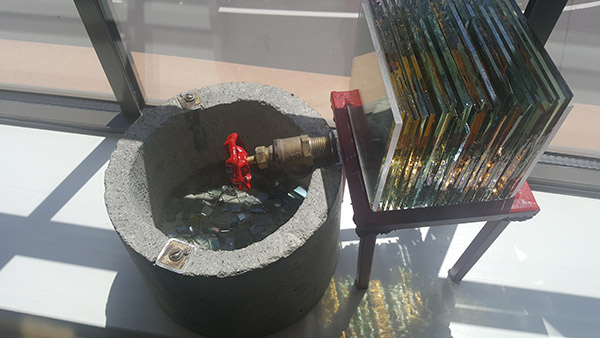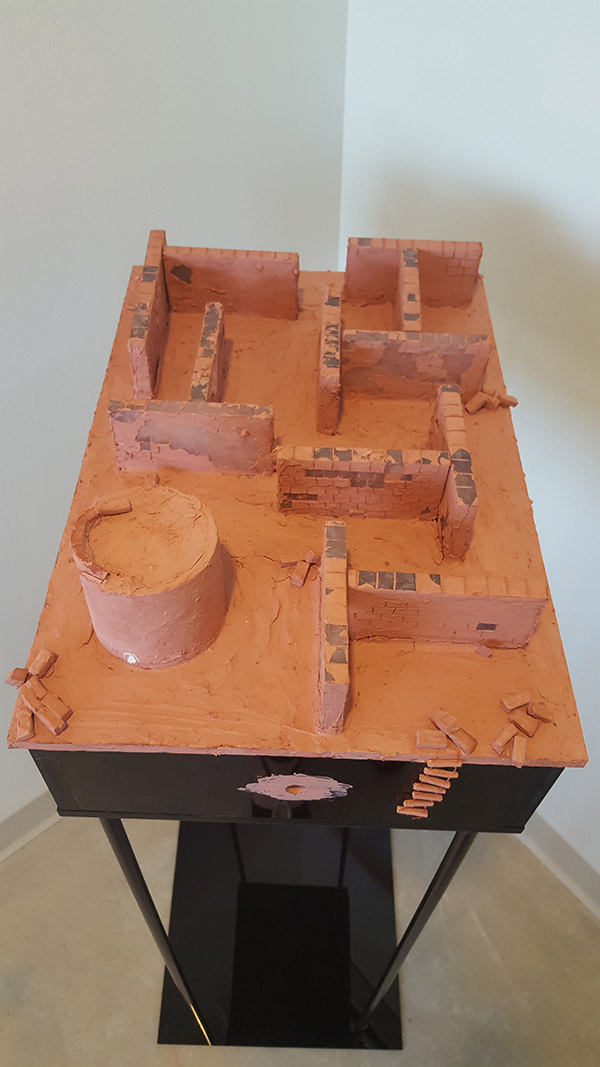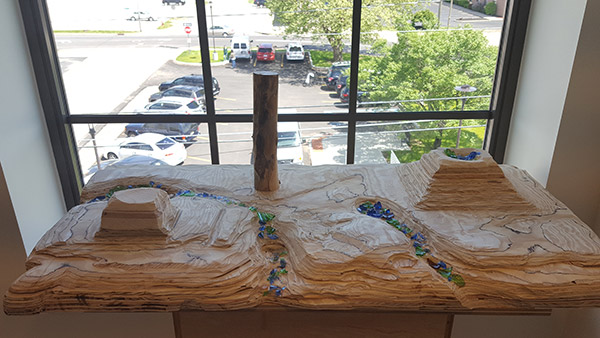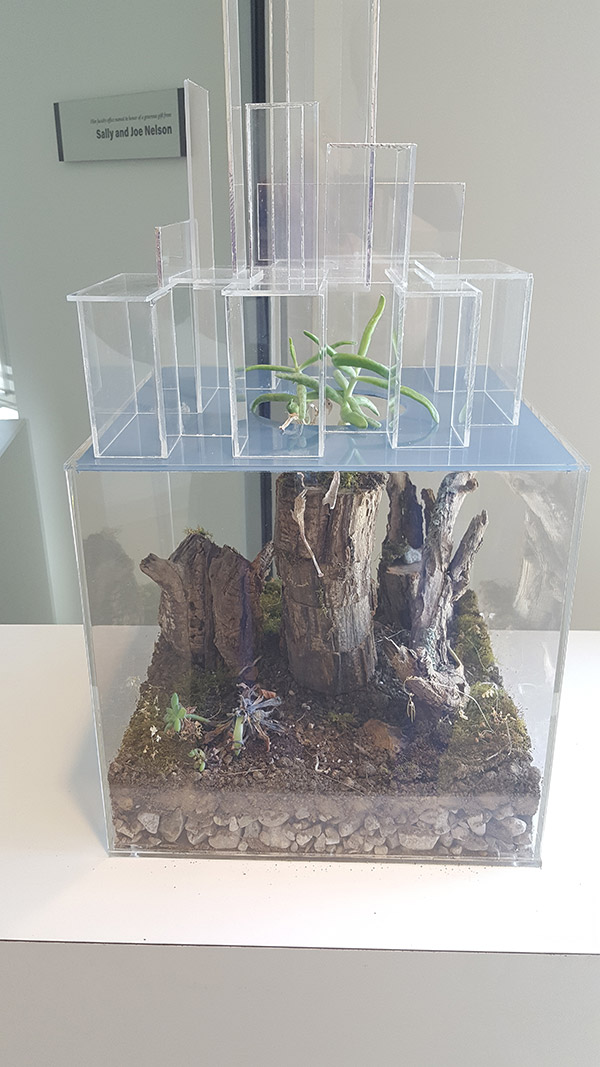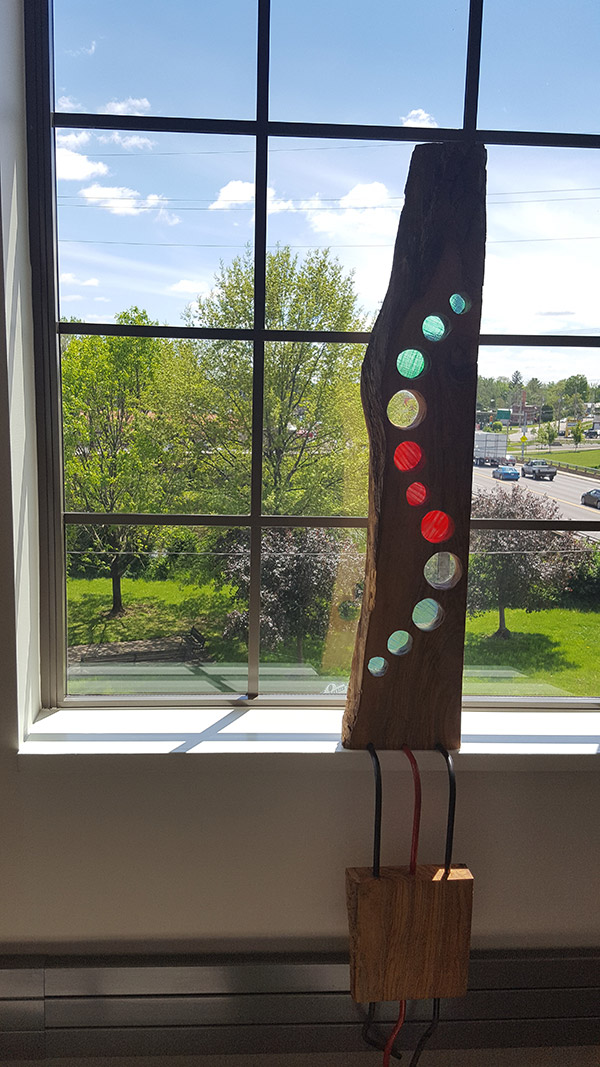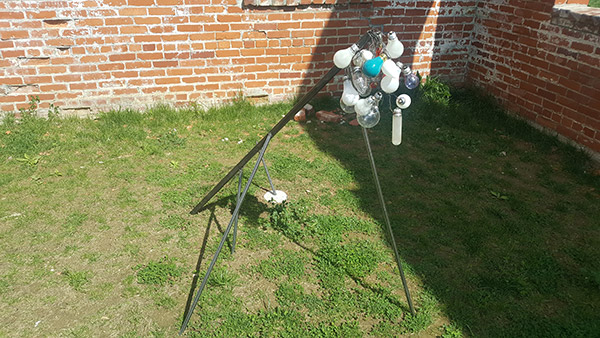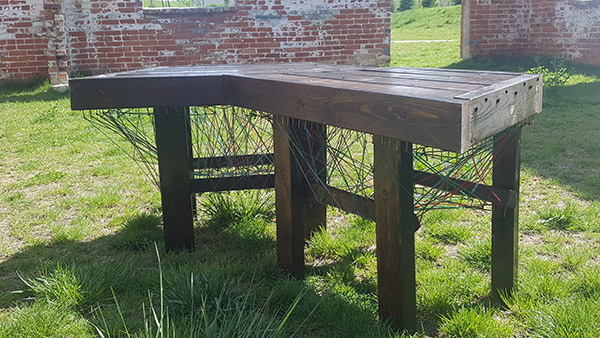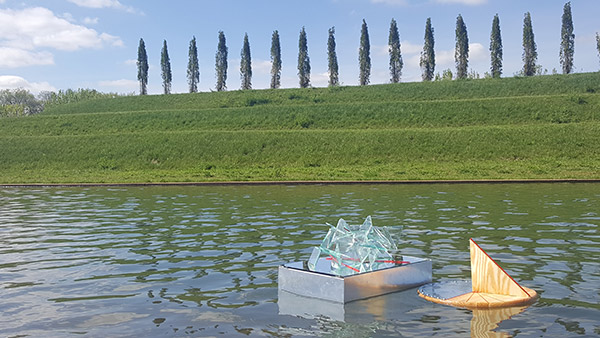An important aspect artists must consider is materiality. The line between natural and artificial in the context of art is meaningful because it hugely influences the meaning one assigns to a piece. In some ways the difference can be described very clearly, for instance when "Land Art" came about in 1960s, and as Judith Collins explains, artists "turned to working outside [on] the land, rather than in their studio, partly as a reaction to the urban materialist Pop Art that was prevalent at the time." It is clear in this context that the use of nature and natural materials outside in art can be considered the polar opposite of the artificial materials that were used in some artists' studios.
However, there are other instances in which the line between natural and artificial art is less clear. For example, in "Earth Rooms," Walter De Maria was able to blur the lines between natural and artificial by creating rooms in which soil is enclosed by glass walls. In one sense, the artist uses soil to evoke nature and the organic world. However, the soil is enclosed in a clean, white gallery, which is considered manmade and unnatural. The author states that "all a viewer can do is look empathetically at the trapped soil and reflect on its location in an alien environment." This creates an interesting experience for the viewer that evokes complex feelings towards how our culture values dirt and other natural materials in comparison to how we value what we see as societal progress and modernity. It is in these pieces that, as Judith Collins states, “the seam between the natural and the artificial is unraveling."
Another artist that reflects on the nature-culture relationship is Meg Webster. Webster’s material of choice is living plants, moss, flowers, and other natural objects. She used these throughout the 1980–90s, creating artwork in the form of gardens located at various museums and universities. Two of her pieces, “Glen” (1988) and “Kitchen Garden” (1992–4) included a stream and 250 varieties of plants that “were planted for consumption by local residents or whoever passed by, and the garden was tended by staff members of the museum.” The interplay between nature and art here is centered on natural, organic matter. However, it is after all, made by humans, and must be tended to by humans. This additional unnatural element reflects the essence of culture by exploring how humans interact with the environment around them.
Similarly, at Ariel-Foundation Park, there are a few pieces of art that are made from site-specific recycled materials. Both steel and glass from the factory are heavily incorporated into the sculptures. Dispersed throughout the landscape, they draw the viewer’s eyes to the synthetic materials among the grassy fields, trees, and lakes. They force visitors to connect visually and interact physically with the environment around them. For instance, the terraces of dirt that harken back to early Native American mounds, such as Serpent Mound in Peebles, Ohio, invite kids and adults alike to climb them and roll around in the grass. Similarly, the Tree of Life Labyrinth™ in the park encourages mindful strolls along the paths lined with trees.
Ariel-Foundation Park, as a whole, addresses the complexity of nature, culture, and art. By juxtaposing the artificial contributions of humans with the natural, organic world, it forces viewers to connect these spheres and be more conscious about the environment around them. It encourages mindful consumption of and attention to the value of both the natural and the artificial in the world.

